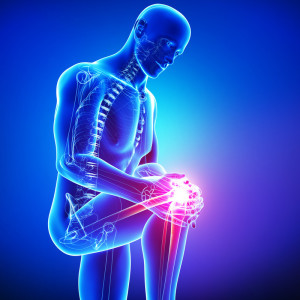The pain of chondromalacia is not a rare complaint of hard working federal employees that have active jobs. It is a disorder of the cartilage, particularly of joints and mostly affects the knee, hence often being called “Runner’s knee”. If a border patrol agent, for instance, is actively on his feet a lot with a considerable amount of gear, then cartilage degeneration can occur.
The development of chondromalacia is often related to sustaining knee injuries. Osteoarthritis, a degenerative joint disease on the other hand, also causes knee pain which is more frequent in aging individuals. Though both of these conditions have a common manifestation which is knee pain, it is important to differentiate one from the other for the treatment approach.
These diseases both affect the articular cartilage of the kneecap. In chondromalacia, the cartilage softens and weakens. Continuous softening may result in cracking of the cartilage and can lead to wearing away in severe cases. When this happens, the bony surface of the knee cap is exposed and upon movement, it grinds painfully against each other. The broken pieces of cartilage inside the joint can also produce an effusion when the surrounding cells gets irritated.
This may lead to continual swelling of the joint, necessitating an aspiration by an experienced Arizona workers comp doctor. A cortisone injection may be in order to settle down inflammation and relieve pain.
Osteoarthritis, occuring mostly in weight bearing joints and primarily inflammatory in nature. This begins in the articular cartilage due to increased weight put upon the joint or normal weight load is carried by an injured patellofemoral joint. External factors can aggravate this condition. This would include a worker who is actively patrolling a border, or a state employee who is on his or her feet frequently.
Osteoarthritis is a chronic condition that involves destruction of the articular cartilage happening over a certain period of time, with its early stages lasting for years. This damage to the articular cartilage leads to swelling as an reparative attempt of the bone cells that  includes increased synthesis of proteoglycans which composes the bone matrix.
includes increased synthesis of proteoglycans which composes the bone matrix.
Though it may seem that chondromalacia and osteoarthritis differs mainly in the age bracket of the patients that experience knee pains, there are a lot more characteristics that distinguishes one from the other. It has been reported that among the other joints in the body, the patellar cartilage degenerates the earliest and this degeneration may be seen in chondromalacia and osteoarthritis.
In terms to forces that causes the damage in chondromalacia and osteoarthritis, in chondromalacia, the cartilage is destroyed by an abnormal mechanical force in the knee joint. In active young adults, chondromalacia is brought about by an intense acute concentrated force directly acting on the patella.
Histopathologically, the occurrence of patellar degeneration is also distinct in each disease. Softening, swelling and fissuring can be seen in chondromalacia while osteoarthritis favors fibrillation, shallow erosion and thining of the cartilage. Furthermore in chondromalacia, the softening of the cartilage does not always give rise to wearing away compared to osteoarthirtis where there is a decreasing joint space and thus wearing away of the cartilage over time.






Leave A Comment